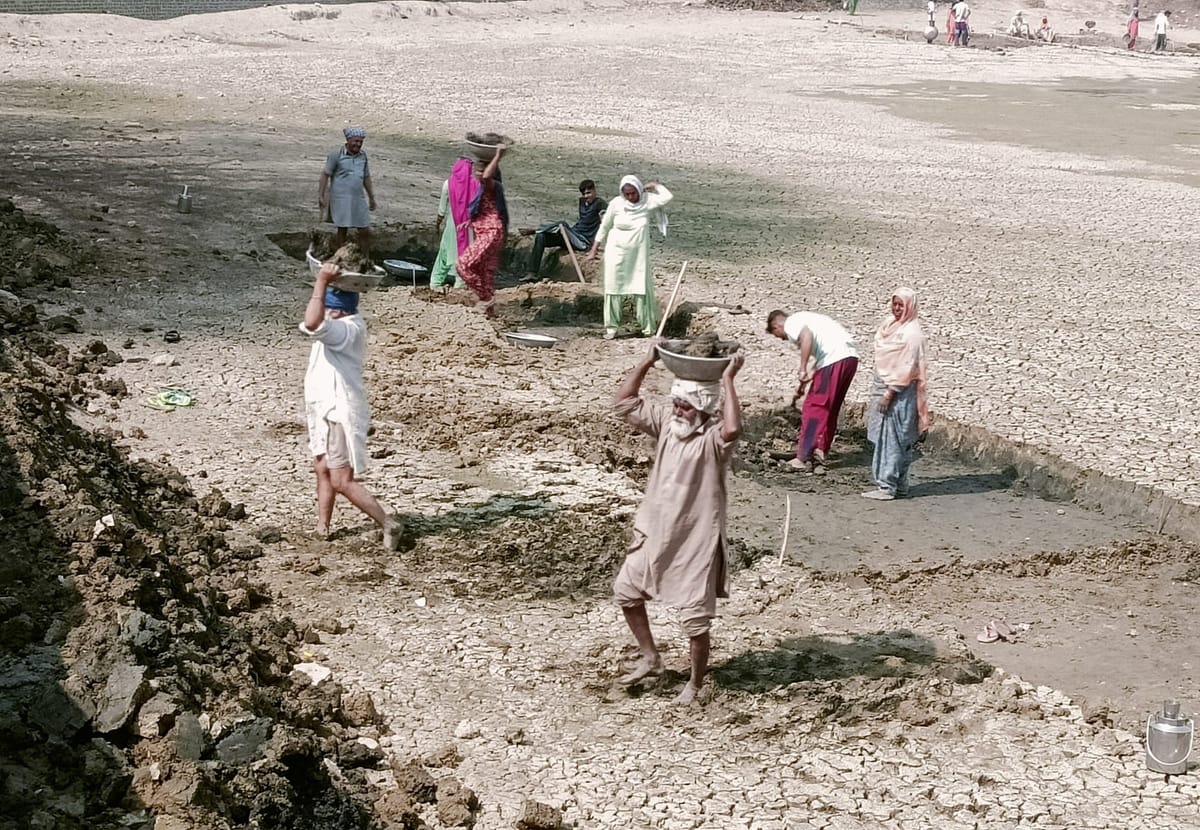Right to safe work

The maximum daytime temperatures in the Kalaburagi and Belagavi districts of Karnataka this week are expected to be 41º C and in the late 30sº C, respectively. Research has found that if the relative humidity is high enough to render a wet-bulb temperature exceeding 30º C, outdoor exposure of even a few minutes can prove fatal.
Yet many workers, especially in the country’s informal sector, routinely work outdoors in extreme heat with poor access to clean cool water, breaks from work, and medical attention. State-level policies and district-level heat-action plans are crucial to catch individuals who ‘slip’ through the protections available to the formal labour force.
In this spirit, Tamil Nadu and Telangana recently notified extreme heat as a state-specific disaster. Earlier this month, Karnataka also said government offices would close by 1.30 pm in April and May and that workers employed under the Mahatma Gandhi National Rural Employment Guarantee Act (MGNREGA) in the Kalaburagi and Belagavi revenue divisions — comprising 14 districts — would receive a workload concession of 30% without any reduction in wages. From The Hindu:
“Labourers who work in open fields during the summer months are advised to take precautions such as wearing loose cotton clothes and consuming buttermilk, coconut water, and green vegetables instead of spicy food, tea, coffee, and junk food. They should drink enough clean water. The officers concerned are also directed to provide the workers with clean drinking water, first aid box, tent, and other basic facilities at the MGNREGA worksite,” [State Rural Development and Panchayat Raj Minister Priyank Kharge] said in a press note.
The decision aims to protect rural labourers from the harshest heat during working hours.
These initiatives are all on the right track because they’re cognisant of the fact that climate change will force the cost of economic growth to increase. For example, sans the concession granted by Karnataka — a notably substantive state-level policy for working in less-than-ideal conditions — workers may have had to set aside a larger fraction of their incomes to pay for medical care for heat-related injuries.
However, some media outlets have since cited a recent survey by a non-governmental organisation, ActionAid India, to report that many workers in Belagavi were unaware of the state’s announcement nor had been accorded the promised infrastructure. From Deccan Herald:
Out of 124 recently surveyed workers in 10 villages from Chikkodi taluk, Belagavi, 72.5 per cent of people work between 10 am and 5 pm and in 68.5 per cent of cases, no tented or shaded areas were provided where workers could take a break. …
In Raichur, where temperatures in the day can reach anywhere between 42 to 45 degrees Celsius, Mahatma Gandhi National Rural Employment Guarantee Act (MGNREGA) workers continue to start their shifts only at 10 am, working through peak-time heat. …
Additionally, considering extreme heat conditions, the government had announced a 30 per cent concession on workload, with full payment, for workers in the Belagavi and Kalaburagi revenue divisions. This includes Belagavi, Dharwad, Gadag, Haveri, Bagalkot, Vijayapura, Uttara Kannada, Bidar, Kalaburagi, Raichur, Yadgir, Koppal, Ballari and Vijayanagar. However, the survey notes that 75 per cent of surveyed workers were not aware of such a provision and were not provided with any concession.
“We have found that when such workload concessions are announced, only those who are aware and ask are provided with concessions,” says Mahantesh Hosamani, an activist from Bagalkot.
Aside from leaving the Act’s beneficiaries bereft of social protections, the lacuna recalls that the enforcement of state- and district-level plans remains at the mercy of local bureaucrats and that there is no democratic mechanism to ensure state governments keep their promises. In this way, the additional cost imposed by extreme weather is passed to a population already dangerously vulnerable to high heat and the social welfare dimensions of climate adaptation efforts continue to stay on paper. As science journalist Mahima Jain reported in Mongabay India in 2022:
Despite the strong evidence of climate impacts, the state and central governments are not ready to combat these issues as there are institutional changes required to fight against, Prakash said. … During summer, workers avoid working in the heat by starting before dawn and finishing by late mornings. “We need an MGNREGS plus. We need to move on from such a knee-jerk solution, as this can’t go on for years. People need to be upskilled, we need agro-based or other industries set up in the vulnerable areas so that people have alternate employment,” Prakash explained…
Goswami too said that during heatwaves, the nature of work has to change. “We need to provide work which can be done in some shade. The working conditions are inhuman. How does one work in 49-50C?” he asked. Prakash explained, currently none of India’s social protection programmes have a climate angle. These are general programmes protecting people from different vulnerabilities. But given India’s diverse ecological zones, the impacts are different, and a one-size fits all social protection programme won’t work, and there’s a need to re-evaluate programmes from a climate lens.
Ultimately, the Act’s goals are themselves ill-served. To quote developmental economist Gerry Rodgers writing in Economic and Political Weekly in 2024:
… [MGNREGA] was an important part of Indira Gandhi’s 20-point programme to eliminate poverty in the early 1970s. Later in that decade, the Maharashtra Employment Guarantee Scheme changed the underlying premise from one of emergency relief to one of the right to employment, with the obligation of the state to satisfy that right. But that too was not new. The notion of the right to work has a venerable history. It is a key element of Gandhian philosophy, it is addressed in the Indian Constitution, and it is included in the United Nations International Covenant on Economic, Social and Cultural Rights. …
In the literature and news reports, there are also suggestions that the MGNREGA has also been used by the central government as an instrument of pressure on states governed by opposition parties, for instance, delaying allocations; or that it has been used as a vehicle to support other state policies, such as financial digitalisation or the extension of the Aadhaar card system, even when these interfered with the operation of the MGNREGA programme. Another important question about a programme such as MGNREGA is how well it integrates with other government social and redistributional policies.
Today, rather than epitomise the ‘right to employment’, and thanks to the Centre’s repeated interference with its conduct and both the Union and state governments’ failure to upskill workers to look for less injurious employment, its workers now risk a ‘right to exploitation’.




